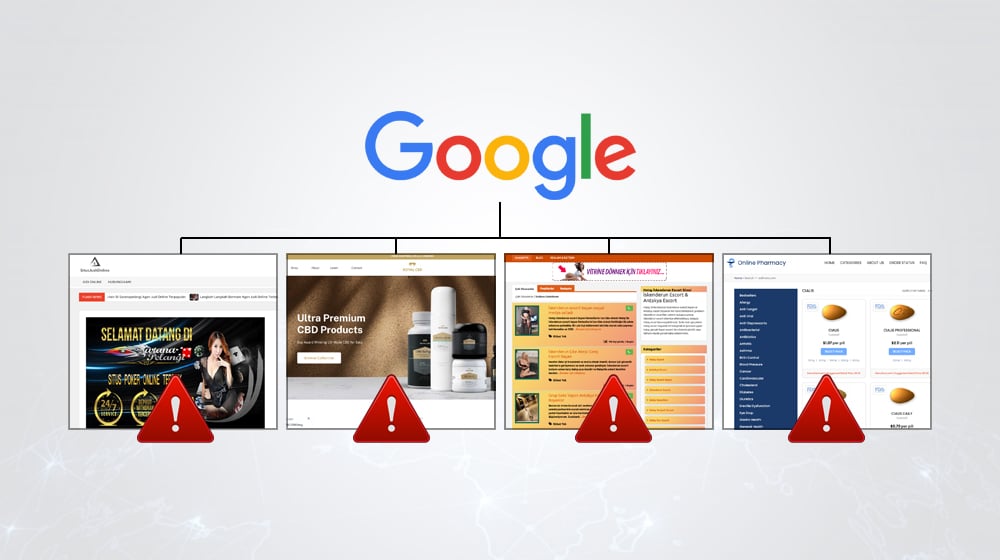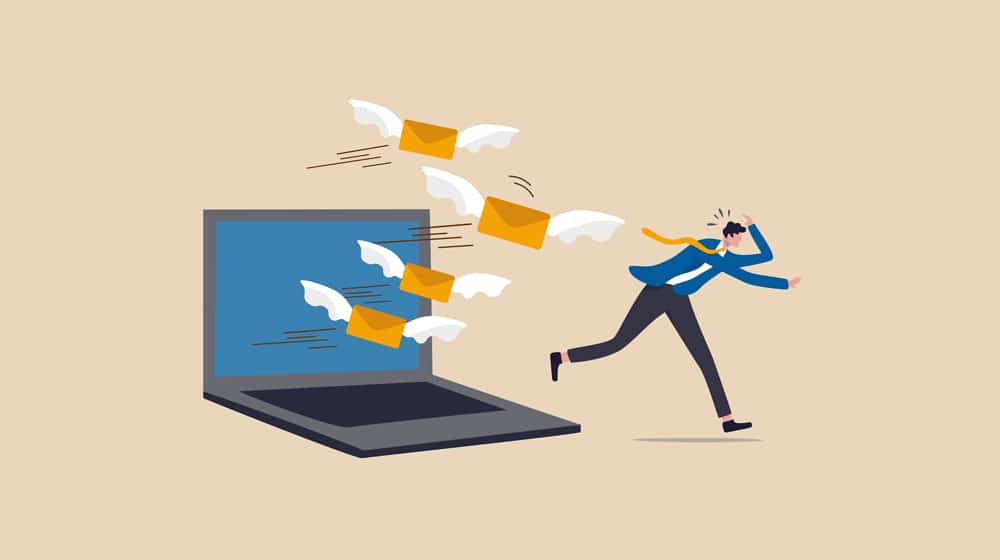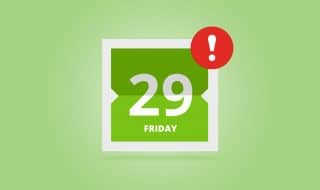Is It Better to Stagger Blog Posts or Post Them All At Once?

Blogging is typically viewed as a consistent kind of enterprise. Most content marketers, including myself, often recommend that you build up a small backlog of content, primarily because we know one real truth about running a high-quality blog: it's difficult. It's really hard to write and write and keep writing, every single week. Sometimes you just don't have the inspiration. Sometimes you catch a cold. Sometimes you want to go on vacation.
There are a number of different reasons why you might not want to (or be able to) write in a given day or week - but does your blog care? Does your audience care?
Not really. Sure, some of them will probably tell you they're your fans and to take all the time you need, but the proof is in the pudding. Consistency in your publication schedule is important, and missing regular updates to your site is a slippery slope.
Still, though, sometimes you sit down and you can write out two, three, four, maybe even more blog posts in a given day or week. You have all this content here, ready to go, so why not publish it?
Thus we come to the question I want to focus on today: is it better to stagger out those posts, scheduling them to be published once a week or whatever, or should you just publish all of them right now? What are the SEO implications of these strategies?
If you've been reading between the lines, you probably already guessed my position.
My Position
I publish around three blog posts per week, but I rarely write them on the days that they're published. I write them in advance, sometimes well in advance. I have a pool of posts I've written that I can schedule and publish as necessary, about a week or two in advance, though again: it varies.

There are a lot of good reasons why you should stagger out your posts, so I'm going to cover each of them in detail.
Reason 1: Google Watches for Spam Patterns (Updated 2023)
This right here is probably the number one reason I prefer staggering out my posts, though to be honest, I haven't found anywhere in Google's rules where they recommend this over dumping a bunch of content at once.
Google's Search Essentials (formerly called Webmaster Guidelines) don't specifically address the issue of publishing a large amount of content at once. They focus more on the quality and relevance of the content you publish rather than the quantity, frequency, or things like that.
Anecdotally, I've personally noticed that posting a lot of content at once can have some downsides. Many content creators share the same fear that Google might see it as spam, which could hurt our website's rankings. But, I've also seen situations where posting a lot of good content at once helped a website's visibility and rankings, as long as the content was well-written and useful.
A few years ago in an SEO discussion with John Mueller (the Google rep) said:
"A site isn't a machine that pumps out content at a fixed rate. Well, it shouldn't be."
What this indicates is that Google doesn't particularly care if you're posting on a regular, fixed, robotic schedule or if there's some variation. What this doesn't mean is that Google likes it when you dump content in batches.
Google's algorithms evaluate hundreds if not thousands of data points on every aspect of your website. They analyze every word, every letter, every byte of code, and a lot of the data surrounding it, like your hosting IP and datacenter, time of publication, how long users stay on your pages, how your page loads in different browsers, what color font you use, and literally thousands of other factors. It's difficult to say if any single factor is more important than others since Google looks at a huge holistic impression of a site when they make their judgment about it. For example, if your text is a light grey color and is somewhat hard to read, it won't necessarily hurt your rankings if every other aspect of your site and your content is rock-solid.
One thing that they may watch for is batch posting. One thing that low-quality spam sites often do is start up a blog, publish 50-100 blog posts all at once to make it look like a better, older, more active site, and then drop it for a while. They might come back in a few months if the site hasn't been penalized and add more to it – possibly dropping more external links as part of a PBN or link sale network – but just as often they just sit there doing nothing. This isn't exactly natural, and if you consider your average blogger, they aren't doing things like this. Their content is published more organically over time.

Now, if your site establishes a pattern of dropping 5-10 blog posts in the first week of the month and nothing else for the rest of that month, that's probably fine. The key here is that you're doing it every month. On the other hand, if you just sporadically dump a bunch of blog posts whenever you finish a batch, your site is going to be wildly inconsistent.
Some testing over the years has shown that publication consistency – not necessarily frequency or volume, but consistency – is a big ranking factor. I, personally, find it easiest to write a bunch of blog posts whenever I have the available time and focus to do it, and schedule them out to disperse them over time.
Reason 2: Staggered Posting Improves Indexing
You can't rank content from your site if that content hasn't been found. Getting Google to crawl your site can be irritating because, ultimately, this decision is not up to you. Entire guides have been written about troubleshooting the indexation process or getting Google to index your site in the first place. You can request that Google index or reindex your site in Google Search Console, but this isn't a guarantee that they'll include your content on their search engine. Creating a sitemap and linking it to your Google Search Console dashboard can help speed things up.
Moving forward, let's look at two scenarios.
1. In the first scenario, you publish a whole bunch of content to your site (maybe 20 articles or more, all at once). It takes a few days, but Google finds them and indexes them all. Great! Then a few days later, Google comes back, and they see no new content. You haven't published anything else, because you're building up for another big dump later, or you just haven't had the focus to write more posts. Google makes a note in its database and leaves.
Another few days pass and they come back, and your site still hasn't updated. Googlebot shrugs its digital shoulders and leave again. Another few days later, your site is exactly the same as it was a week ago. Maybe it's been a month, maybe longer, and you still haven't published any new content.

Google likes to check sites roughly as often as they publish. After all, while their processing power is functionally infinite as far as we mortals are concerned, the internet they index is also functionally infinite. They need to ration that processing power, and they don't want to keep visiting your site dozens of times per day if there's nothing new to find. Conversely, some large news sites are indexed thousands of times per day. They might make a note that says they should check your site once a week instead of once a day, or once a month instead of once a week, or maybe not even check until your sitemap updates or data from Chrome says that some new content has appeared.
2. In the second scenario, you take that content and schedule it out so it shows up on a Monday-Wednesday-Friday schedule. Google checks and sees one new post, and that's fine - they index it and move on. They check a day later and there's nothing new, okay. They check the third day, and, hey, a new post! Google indexes it and makes a note about how long it's been since they've found new content.
You've essentially "trained" Google to check your site every day, or every other day, or a couple of days a week, or however often you're actually publishing. More importantly, they'll find fresh new content every time they come by and check out your site.
Reason 3: Schedules Build Anticipation and User Habits
As a site owner, you have to concern yourself with more than just Google. In fact, Google has a lot of documents in its help center about SEO, but a lot of it comes down to them trying very hard to tell you not to pay attention to SEO. A lot of their rules boil down to "make the user experience positive and we'll reward you."
Paying attention to user behavior, using psychology to your advantage, it's all part and parcel of web marketing. So, let's think about something like a magazine. Magazines don't dump six months' worth of issues on you all at once, do they? Of course not; they publish on a set schedule.
That set schedule does a lot. It allows them to work on one issue at a time, dedicating time and attention to making it perfect. It allows them to tease and build up to particular features and content, to build anticipation. It lets fans of the magazine grow to anticipate each issue. If you have an email newsletter (which you should), then your subscribers have something to look forward to each week.

You can do the same thing with a blog, except instead of a cluster of content like a magazine published once a month, it's more regular features published more often. Up above, a Google representative says websites don't have to work this way, but when it comes to user psychology, that's the way that often works best.
Now, I know you can cite a bunch of counter-examples of high-end blogs that don't do this. You have powerful people who run blogs where they publish once a month or less, on whatever schedule they feel like.
The difference here is that those are powerful people. Someone like Jeff Bezos can write a blog where he publishes a new post once every four months and he'll still get a million links and a trillion hits. It's not because of his content, it's because of who he is. When you have power and position and leverage, a lot of other rules don't really matter anymore. The rest of us? We have to contend with reality.
Reason 4: Staggering is Less Work Overall
Writing a blog post is a lot of work. I see some people talking about how they take 5-6 hours to write a single blog post, and others talking about how a post can take a week or more, once they factor in turnaround time from graphic design or photographers.
You have to create images for your post, format the text, insert links and check them to make sure they are going to reputable websites, create a title and description for your SEO, set your permalinks, schedule it, grammar check it, track rankings, and dozens of other things. Across dozens or even hundreds of posts, it will take a whole lot of effort to post all of them at a similar time, with no discernable benefit.
If you're bunching up all of your content for publication on one day, a lot of that effort goes to waste, and a lot of it also stacks up. You have spikes and valleys in activity levels. You do a lot of work for a few weeks, then take a few weeks off, or you crunch, and it's all wildly inconsistent.
Staggering out your posts allows you to spread out that work; work on posts evenly throughout the day or week or month, put effort into each of them in turn, and create a more consistent, higher-quality product.
Reason 5: Posts Pushed Down in Archives Get Less Traffic
One argument mentioned by Blog Tyrant, in the context of launching a site with one post versus launching it with a backlog, is the archive problem. It goes like this. When you dump a bunch of content at once, and someone visits your site, they see the content on the front page. They'll view that content, starting with the newest first (unless something else on the front page attracts them specifically more), but any content beyond that?

Think about the Google search results. In fact, take a look at the first chart on this page. The first result gets over 30% of all clicks. The second gets less, the third gets less still, and on and on. #11, the first result on the second page, gets basically nothing. There's very little difference between #11 and #100, even compared to #10, let alone to #1.
Your blog archives work in a similar way. Most of the people who visit your site will click the most recent post or two first (or your most heavily featured post, anyways). A decreasing number of people will click on posts further down the page. What about clicking through to visit your archives on your second, third, or fourth page? This is far less likely to happen.
This is why the majority of a site's direct traffic goes to recent posts, while old posts get primarily search and social traffic. Google doesn't care how far back in the archives a post is, if it fits a query it'll be recommended. Users visiting your site for the first time aren't going to dig through the back catalog.
Another consideration is promotion. You can't just create and write a blog and assume it's going to work. You need to promote your blog posts. When you dump 20-40 posts all at once, how are you going to promote them? Social media wants fresh content, but if you try to promote all of them at once, you're spamming your feeds, and no one likes that. If you wait, you end up promoting old content, and no one likes that either.

Email is similar; when you have an email digest to tell people about the content you publish, that's great, but if you end up emailing them 20 times in a day (or just once, throwing 20 links at them at once) they aren't going to care. They'll read one or two pieces, and delete the rest of the emails.
Some Counter-Arguments
Now, I like to see both sides of an issue and evaluate it to reaffirm or change my position from time to time, so let's do that here.

Are there any good reasons to post all your content at once, rather than spread it out? Here are some of the arguments I've seen.
"If your blog posts make money, not posting them is leaving money on the table."
Well, yes and no. If you write a great high-quality blog post that you spent hours or even weeks writing and perfecting, if you decide not to publish it, you might be leaving traffic (and therefore money) on the table. However, blogging is complex. You have a social sharing element, an email newsletter element, and the fact that Google can take months or even years to start taking some of your content seriously and start giving it the attention it deserves. If you decide to schedule this out to a couple of weeks in the future, it's not going to hurt you, but it might hurt you if you burn out your newsletter list, annoy your social followers, or miss opportunities by posting your content backlog in quick succession. When all things are considered, there are just not a lot of pros of publishing all of your blog posts in quick succession.
"If you wrote that much content and just sat on it, it can't be that good."
Well, maybe - just because you've stacked up that much content doesn't necessarily mean you didn't spend the effort to write it. Maybe you've been developing a site to launch for a year and have been slowly producing content the whole time. Maybe you have multiple writers producing content for you. Maybe you just haven't had time. However, if you outsourced these blog posts to content farms and haven't read them from start to finish, and if they drone on and on and don't actually provide any useful info, solve the reader's problems, or answer their questions, they may actually not be very good.
You can compare the word count to the average blog post, check to see if they've created a high-quality outline by reading their subheadings and evaluating the structure and flow, read it from start to finish, and make that judgment for yourself.
Frankly, the counterarguments I've seen just don't hold enough water to make me ever want to dump an archive. If you're certain that your content is high-quality and far above average, spread it out, give yourself flexibility in your work schedule, and don't worry much about it.
Remember, content quality matters more than anything!










December 14, 2020
Totally agree with this. I have a client that posts 7 articles all on the same day once a week and now I have something to show them. Thank you for sharing these points
December 18, 2020
Hey Michelle, happy to help!
March 17, 2021
Good point. Actually was planning on posting all my articles at once but I might schedule them out instead.
March 25, 2021
Hi Marian! That's the best move, and what the scheduling functionality was intended for. It looks unnatural if a site posts 50 articles all at once and then is relatively quiet for the following months. It sends Googlebot some mixed signals of how often they should be checking your site and it may confuse readers. Scheduling them may also give you time to add extra content and information to those posts as they go live.
These take a lot of time to get right - checking spelling and grammar, images, videos, meta information - you don't want to rush it just to get them out as quickly as possible. Scheduling them makes a lot more sense in my opinion.
May 10, 2021
Great guide. I don't see any reason why you should publish all of your content at once. Your followers won't have something to look forward to and it probably looks unnatural.
May 14, 2021
Hey Deborah,
Thanks for the comment!
I don't know where this info originally circulated, but a lot of the people I talk to want to start with this strategy.
I think it's most popular on newer blogs that are empty. They want to launch hard and put a lot of content up so the blog doesn't look new for long, which I can understand. Still, scheduling to publish one post per day instead of publishing a bunch of articles simultaneously is better than nothing.
June 08, 2021
I agree with this. I regularly post 1 article per week so my readers and followers have something to look forward to weekly. It also helps with my SEO.
June 11, 2021
Hey Everette,
That's great. Keep it up!
One post per week is all any business needs to achieve outstanding results, especially if you're picking strong topics and creating long-form content.
November 11, 2023
Thanks for the helpful article! Was confused on whether to delay or post my blogs all at once.
November 13, 2023
Hey John, you're welcome!